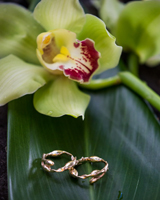 |
Enhance
Your Hawai‘i Itinerary With Visits to the National Parks & Historic Sites
Visiting national parks and historic sites adds meaning and significance to any trip. From stunning sunrises at the
summit of Maui’s Haleakalā to paying tribute at Pearl Harbor on O‘ahu, your clients’ unique experiences at Hawai‘i’s
national parks and historic sites will immerse them in the Islands’ breathtaking natural world and rich history.
Kaua‘i
Kīlauea Point National Wildlife Refuge is home
to one of the largest populations of nesting seabirds in Hawaiʻi, including the red-footed booby, great frigate bird,
Laysan albatross, and the native nēnē (goose). Clients are also likely to see dolphins, Hawaiian monk seals,
green sea turtles and — from October through April — humpback whales. Reservations are required.
The Old Sugar Mill of Kōloa is
part of Hawai‘i’s first sugar plantation, and clients can visit its remains. Laborers from Asia and Europe lived in the
plantation’s camps, sharing the food, music, stories, and traditions of their homelands that have shaped today’s
fusion. Admission is free, and tours are self-guided.
Self-guided walks along the large, stacked-stone walls at Pā‘ula‘ula State Historical Site let
clients see Fort Elizabeth, the last remaining Russian
fort in the Hawaiian Islands. The structure was built in 1816 when the ali‘i nui (high chief) of Kaua‘i placed
his kingdom under Russia’s protection to deter attacks from King Kamehameha. Admission is free.
O‘ahu
The Pearl Harbor National Memorial commemorates the
Pearl Harbor attack of December 7, 1941, which killed over 2,400 military personnel and residents and sank 12
battleships, hastening America’s entry into World War II. Admission is free, but program reservations are recommended to visit the
USS Arizona Memorial and Ford Island.
‘Iolani Palace was the official residence of Hawaiʻi’s
monarchy, including King Kalākaua and his sister successor, Queen Liliʻuokalani. The palace has been thoughtfully
restored and features original royal furnishings and artifacts that were recovered, restored, and replicated over the
years. Online tickets and reservations are required.
Maui Nui
Haleakalā National Park, a mountain-to-sea showcase
of Maui’s largest volcano, is world-renowned for its majestic summit sunrises and hikes of the volcano’s cinder desert,
where clients will see remnants of Haleakalā’s geologic history. The park’s Kīpahulu District, accessible via the Hāna
Highway, offers sweeping ocean vistas, freshwater Pools of ‘Ohe‘o, and a rainforest hiking trail with cascading
waterfalls. Reservations
are required.
Dating back to the 1400s, the Kaunolū
Village Site on Lāna‘i is the largest surviving ruins of a Hawaiian village and includes the remains of Halulu
Heiau (sacred temple), petroglyphs, and priest residences. Clients will need to rent a four-wheel-drive vehicle to
get to the village and can choose from a guided tour or a 3.5-mile self-guided interpretive hike. Clients should
download the Lāna‘i Guide app
to explore responsibly.
Island of Hawai‘i
Hawai‘i Volcanoes National Park is home to two of
Earth’s most active volcanoes, Kīlauea and Maunaloa. Clients can enjoy activities on both volcanoes, like scenic crater
byways and hiking tours that offer an up-close look at Kīlauea creating some of the newest land on the planet.
At Puʻuhonua o Hōnaunau National Historical Park,
clients will see one of the island’s best-preserved Hawaiian cultural sites, a sanctuary and safe haven for individuals
who broke kapu, a code of conduct and system of laws sometimes punishable by death. Those who reached the
puʻuhonua (place of refuge) would be pardoned by on-site kāhuna (priests) and given a second chance outside
its walls. The 420-acre park includes other cultural sites, reflecting over 400 years of Hawaiian history.
|
 |








































